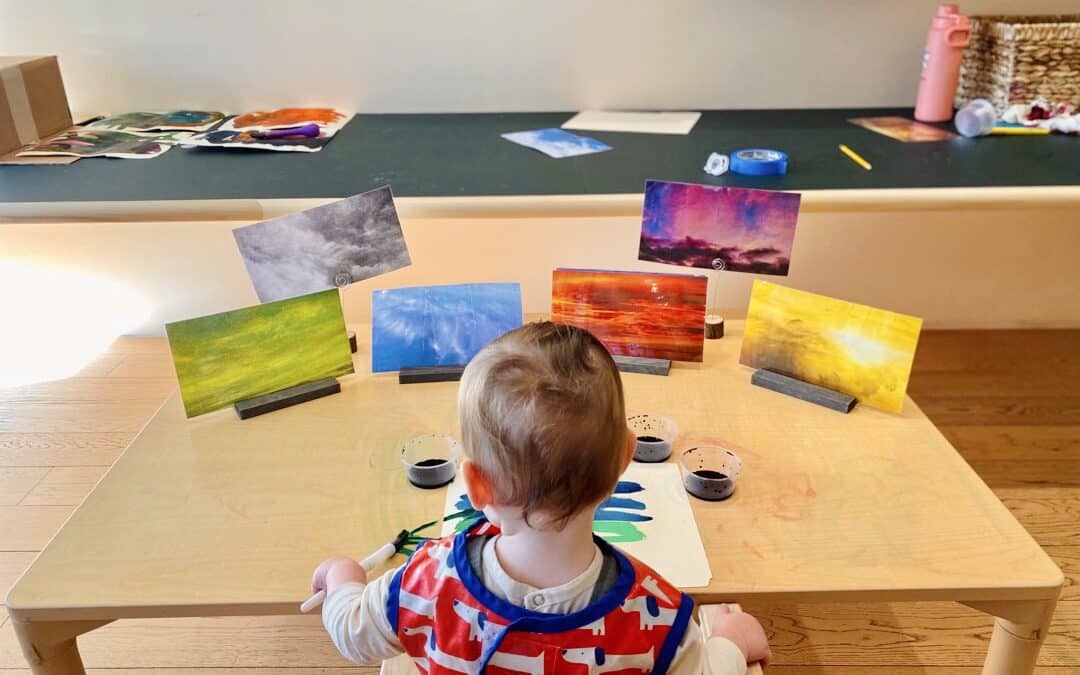“Parents and caregivers, the best person to track your child’s development is you!”
What You’ll Learn
- What are developmental milestones?
- Why are developmental milestones important?
- How can I monitor my child’s development?
When will my child crawl? When will my child use two-word phrases? At what age can I expect my child to put on their own coat? When will my child play cooperatively with their peers? What other skills can I expect my child to develop, and when?
You may be asking, or have asked yourself these questions (among many others!) at one point in time. I’m here to remind you that development is a journey and the pace of development varies from child to child. That said, knowing when to anticipate certain skills can help you better understand your child’s overall health and development.
What are Developmental Milestones?
Developmental milestones refer to the skills most children can demonstrate by a certain age. The Centers for Disease Control and Prevention (CDC) and the American Academy of Pediatrics (AAP) identify four main categories—or domains—of developmental milestones:
1. Social/Emotional Milestones: How children interact with others and show emotion.
2. Language/Communication Milestones: How children express their needs and share what they are thinking, as well as understand what is said to them.
3. Cognitive Milestones (learning, thinking, problem-solving): How children learn new things and solve problems. This also includes how children explore their environment to figure things out along with their academic skills.
4. Movement/Physical Development Milestones: How children use their bodies, including their small and large muscles.
Developmental Milestones Support Healthy Development
Healthy development occurs when children of all abilities can grow up in an environment where their social, emotional, physical, and educational needs are met. Children reach their developmental milestones in how they play, learn, speak, act, and move—these developmental milestones offer important information about a child’s developmental health and how we can continue meeting their needs.
Children develop at their own pace, but reaching milestones early, later, or not at all helps parents, caregivers, and healthcare providers identify any potential developmental delays and/or opportunities for additional support or services in order to reach their full potential and thrive.
How are Developmental Milestones Monitored?
All children require developmental monitoring to observe how they learn and grow and to note whether they meet the typical developmental milestones. Doing so provides parents and caregivers with a better understanding of their child’s development along with a foundation to assess potential need for additional support.
Parents and caregivers, the best person to track your child’s development is you! Just remember that your child’s primary care provider and educators are supportive allies and can help you track your child’s milestone progress as they grow and develop. At SolBe, our educators facilitate progress report discussions multiple times each year to share updates with parents and ensure all members of the child’s support team are on the same page. In my own role as Head of Family Empowerment and Success, I work closely with our families interested in learning more about their child’s development, identifying strategies to help their child, and navigating additional support that may be available outside of SolBe.
Monitoring your child’s developmental milestones can be made easier with the help of CDC’s Milestone Tracker App or their Milestone Checklist. Parents and caregivers can use either resource as a reference to know what developmental milestones they might expect from their child between 2 months and 5 years and to track progress. These resources are not a substitute for developmental screening, however, this information can be helpful to share with your child’s primary care provider.
Be sure to visit the SolBe blog in the next few weeks for ideas on how to encourage your child’s development and what to do if you have any developmental concerns. We’re here to guide you through this parenting journey!
Empowering Takeaways
- Developmental milestones are distributed amongst 4 domains: social/emotional, language/communication, cognitive, and movement/physical development
- Monitoring developmental milestones offers important information about children’s health and development
- Every child develops at their own pace and may reach certain milestones earlier or later than others, and that’s okay!
Be vibrant and keep thriving!
This article was last reviewed or updated on January 20, 2024.
References
Centers for Disease Control and Prevention. (2023). CDC’s Developmental Milestones. https://www.cdc.gov/ncbddd/actearly/milestones/index.html
Centers for Disease Control and Prevention. (2023). Child Development Basics. https://www.cdc.gov/ncbddd/childdevelopment/facts.html
Centers for Disease Control and Prevention. (2023). Developmental Monitoring and Screening. https://www.cdc.gov/ncbddd/actearly/screening.html?CDC_AA_refVal=https%3A%2F%2Fwww.cdc.gov%2Fncbddd%2Fchilddevelopment%2Fscreening.html
Child Mind Institute. (2023). Complete Guide to Developmental Milestones. https://childmind.org/guide/parents-guide-to-developmental-milestones/
Misirliyan, S.S., Boehning, A. P., Shah, M. (2023). Developmental Milestones. StatPearls Publishing. https://www.ncbi.nlm.nih.gov/books/NBK557518/
Scharf, R. J., Scharf, G. J., & Stroustrup, A. (2016). Developmental milestones. Pediatrics in Review 37(1), 25-38. https://doi.org/10.1542/pir.2014-0103
Western Washington Medical Group. (2024). The importance of tracking developmental milestones. https://www.wwmedgroup.com/tracking-developmental-milestones
Zubler, J. M., Wiggins, L. D., Macias, M. M., et al. (2022). Evidence-informed milestones for developmental surveillance tools. Pediatrics, 149(3). https://doi.org/10.1542/peds.2021-052138







